Life has a funny way of throwing you curveballs.
Sometimes they smash your windows; other times, they’re the perfect pitch for a home run.
Two and a half years ago, I was in the batter’s box, coming off a gap year that was supposed to be a full stop but turned into a comma in my career.
The call to adventure came, not in the form of a ring from a wizard or a letter from an owl, but through old clients reaching out.
The path from a digital marketing consultant to leading a fractional CMO agency unfolded organically, and in retrospect, it was like joining the dots on a constellation that always hinted at a bigger picture.
In the last year alone, I’ve secured not one, not two, but 13 fractional CMO positions.
Believe me, it’s no small feat considering most in this game juggle a maximum of three.
But then again, I’ve never been one to play by the conventional rulebook.
Now, this isn’t a tale of overnight success or a story where the hero is bitten by a radioactive spider and gains superpowers.
It’s a story of grit, a bit of wit, and the reality of what happens when you swap hourly rates for value-driven contracts and bring on a crack team to bolster your ranks.
In a nutshell, it’s been more of a marathon than a sprint.
It’s about the slow burn of SEO investments, the nuanced art of community engagement, and the boldness of standing out — even if it means occasionally ruffling feathers.
This journey, my friends, isn’t just mine. It’s a roadmap for anyone staring at their screen who wants more out of life.
So, pull up a chair. Lean in.
As I peel back the curtain on a year that redefined my career, I invite you to glean insights and actionable steps from a narrative still being written, still being lived.
How I became a fractional CMO by accident
My journey wasn’t exactly scripted. Before stepping into the fractional CMO shoes, I hustled as a digital marketing consultant.
Upwork was my playing field for a year and a half, a place where anonymity was as common as the freelance gigs that came and went.
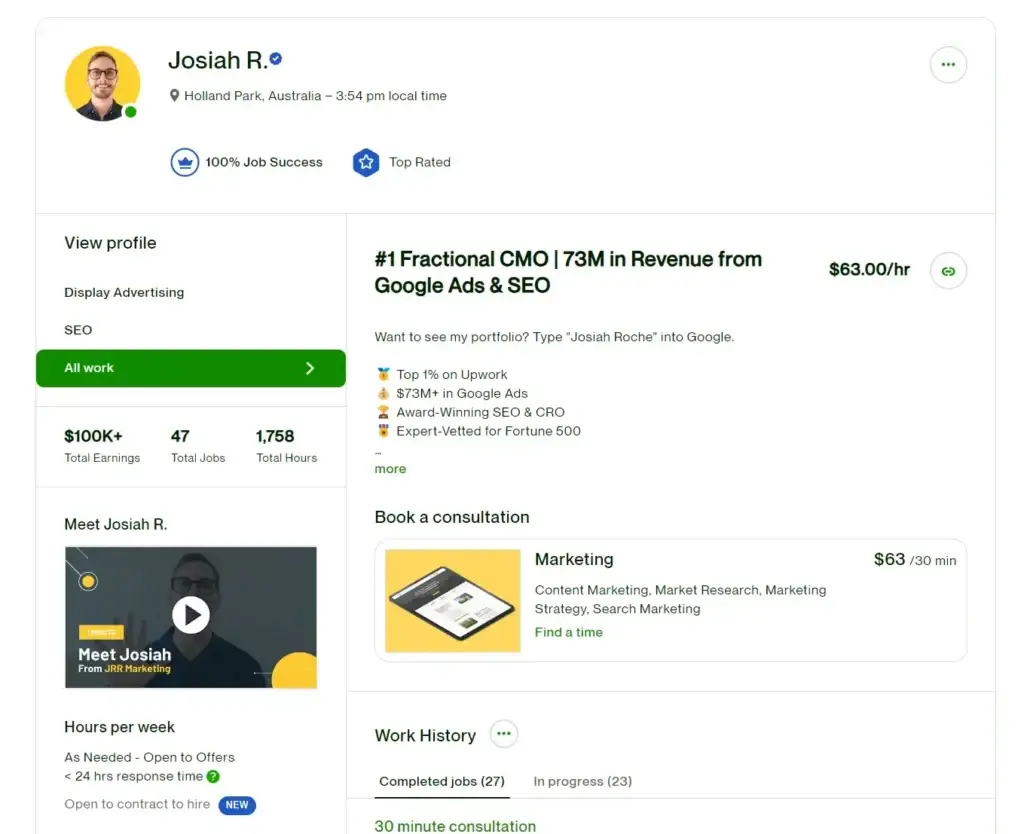
The road was paved with the usual feast and famine, a never-ending cycle of chasing the next project.
Every week, my routine was set in stone: bid on 120 jobs.
It sounds like a herculean task because it was.
Most were shots in the dark, proposals flung into the void, hoping to strike a chord.
I championed the ‘fake it till you make it’ philosophy — not out of deceit but necessity.
Each gig was a rung on the ladder, a mix of bluffs and bravado, always learning on the fly.
Through all this, quitting was never an option.
Every day, I marketed myself relentlessly.
Books were both my refuge and my arsenal, guiding me through rough patches with wisdom gleaned from their pages.
The grind was real, but so was the growth.
It set the stage for what was to come — managing a portfolio of clients that seemed unmanageable to most.
Landing my first steady clients
After the relentless pitching and the constant up-and-down of freelance life, a shift began to take shape.
It wasn’t overnight, and it wasn’t without its sleepless nights filled with strategy and planning.
But, piece by piece, everything came together.
The bids became more targeted, my proposals more refined.
I started to notice patterns — what clicked with potential clients and what fell flat.
Then, the first steady client signed on.
It was less of a eureka moment and more of a quiet nod to persistence.
But from that nod brought a realisation: I could do this, and not just on a per-project basis.
This could be sustainable.
I honed in on niches where I saw the most traction, leveraging past successes into new conversations.
Clients started to see not just a freelancer, but a partner, an asset who could bring lasting value to their businesses.
One client turned to two, then three — each new partnership adding another block to the foundation I was building.
By the time I had a handful of steady clients, I was no longer just a digital marketing consultant.
I had become something more — a fractional CMO by accident.
The job title was different, but the essence was the same: deliver value, drive results, and keep the wheels turning.
The art of juggling multiple clients
With a steady client base, the challenge evolved from getting work to managing it all.
I quickly learned that juggling multiple clients required a delicate balance — knowing when to push, when to hold back, and how to keep each client feeling like they were in the spotlight.
Prioritising value over hours, I cultivated an effectiveness-first mindset.
It wasn’t about clocking in and out; it was about making every minute count.
For instance, I’d ask, “Does this strategy align with the client’s core goals?”
If it didn’t, it was back to the drawing board.
This approach not only honed my own focus but also resonated with clients who saw their investments turn into measurable results.
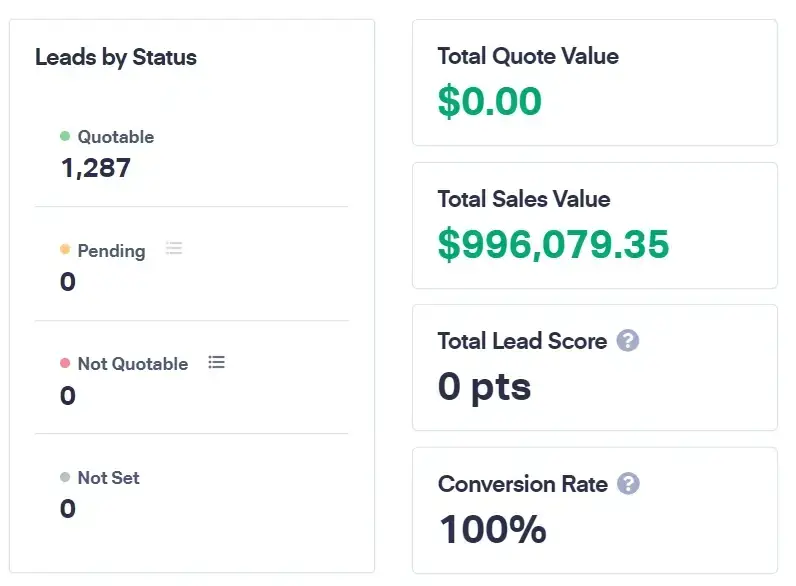
As projects multiplied, so did the hands on deck.
I assembled a group of skilled freelancers whose expertise could be tapped into as needed.
Delegation became my new best friend, but not the kind you use to avoid responsibility — rather, the kind that empowers and entrusts.
I learned that managing a team is less about telling people what to do and more about encouraging them to see what I see — a vision of a project’s potential.
Regular check-ins and collaborative tools kept us all in sync, and the flat hierarchy meant ideas could come from anywhere.
Navigating through the nuances of different industries, expectations, and project scopes, the key was adaptability.
And the payoff? A huge number of projects, each hitting their stride, with satisfied clients not just in the rearview but also on the horizon.
5 Steps to landing fractional CMO roles
I know you didn’t come here to leaf through the chapters of my career. So, let’s shift gears and map out the blueprint I used to snag those coveted fractional CMO positions.
Step 1: list yourself everywhere that matters
In the early days, I made sure my name popped up wherever potential clients might be lurking.
Think of it as setting up camp where the fish are biting.
Marketplaces, LinkedIn, industry forums — you name it, I was there.
Visibility is king on the internet.
But being everywhere isn’t just about casting a wide net; it’s about casting the right one.
On platforms like Upwork, I carved out a niche, fine-tuning my profile with keywords and case studies that spoke directly to my target audience.
Sure, those initial months felt like I was throwing spaghetti at the wall to see what stuck.
But the trick lies in learning which strands of spaghetti have the best stickiness.
You have to hustle, absolutely, but it’s a calculated hustle.
Here’s a quick rundown:
- Sign up to online marketplaces: platforms like Upwork, Fiverr, and niche marketing freelance websites (MarketerHire, Mayple, etc) are your playgrounds. Make them count.
- Optimise your presence: tailor your profiles to showcase your unique skills and past successes.
- Craft a compelling narrative: Your profile should tell a story, not just list your skills. Make it a page-turner.
- Engage actively: don’t just list and wait. Engage with the community, join discussions, and share insights. Especially on social media.
- Reviews and ratings: encourage satisfied clients to leave feedback. These are gold. Sometimes you need to fake it at the beginning. That’s normal.
- Refine your pitch: every proposal should speak directly to the client’s needs. No cookie-cutter templates.
- Stay updated: keep on top of trends in your industry and reflect that in your profile.
- Leverage professional networks: LinkedIn isn’t just for job searching; it’s a powerful tool for positioning yourself as an expert in your field.
Remember, while these platforms are tools to enhance your visibility, they’re not a silver bullet. You need to pair them with consistent quality and networking.
Step 2: invest in your SEO
Now, let’s talk about playing the long game with SEO.
It’s about patience, persistence, and a boatload of content.
And when I say a lot, think of every synonym for “extensive” you can, and that’s still probably not enough.
But here’s the deal: it’s not just about quantity.
The internet’s not a dumping ground.
You need to churn out quality content that really digs into the marrow of your niche.
That’s how you build what we call topical authority.
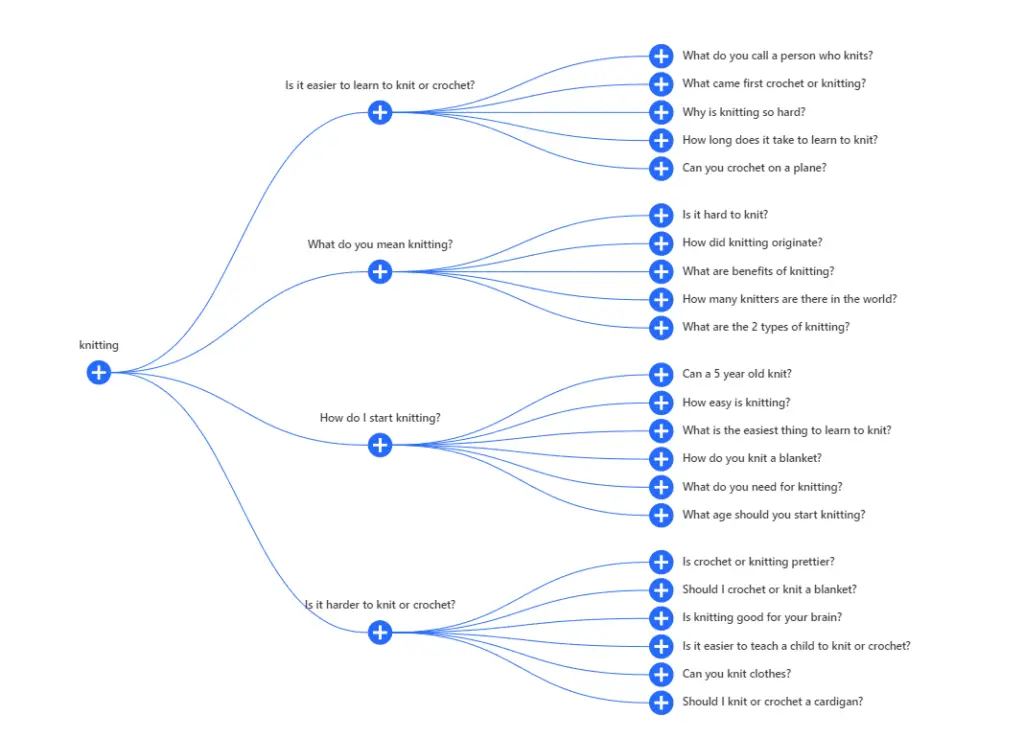
Achieving topical authority is like being the go-to expert in your field — the person everyone turns to for insight.
It’s not about dabbling in every subject under the sun.
It’s about covering every conceivable angle within your niche until you’re the go-to source.
This kind of depth transforms your site into a magnet, attracting visitors and Google’s algorithms alike.
Let’s not mince words: I’ve overhauled my website more times than I’ve had hot dinners.
Hundreds of pages later, my digital footprint spans over 5,000+ keywords.
This isn’t a humblebrag; it’s to drive home the point that SEO isn’t a one-and-done deal.
But it wasn’t just the content that lifted me there — it was the backlinks.
Think of them as the arteries of the internet, vital for that SEO lifeblood. In the early days, I haemorrhaged money on cheap, low-quality links and learned the hard way that in the world of SEO, like many things, you get what you pay for.
Quality trumps quantity every single time.
So yes, I’ve laid down thousands of dollars on quality links, because when it comes to SEO, that’s the sort of investment that moves the needle.
Your rankings cling to these like a lifeline, hoisting you higher in the search engine sky.
Remember, SEO is a marathon, not a sprint.
And it’s definitely not a race to the bottom in terms of spending.
Step 3: build valuable relationships (it’s cliché but true)
“Network.” They say it so much it almost loses meaning, doesn’t it?
But here’s the thing: in the world of business, especially as a fractional CMO, it’s not just about who you know.
It’s about who trusts you.
LinkedIn isn’t just a resume showcase, it’s a gold mine for creating genuine connections.
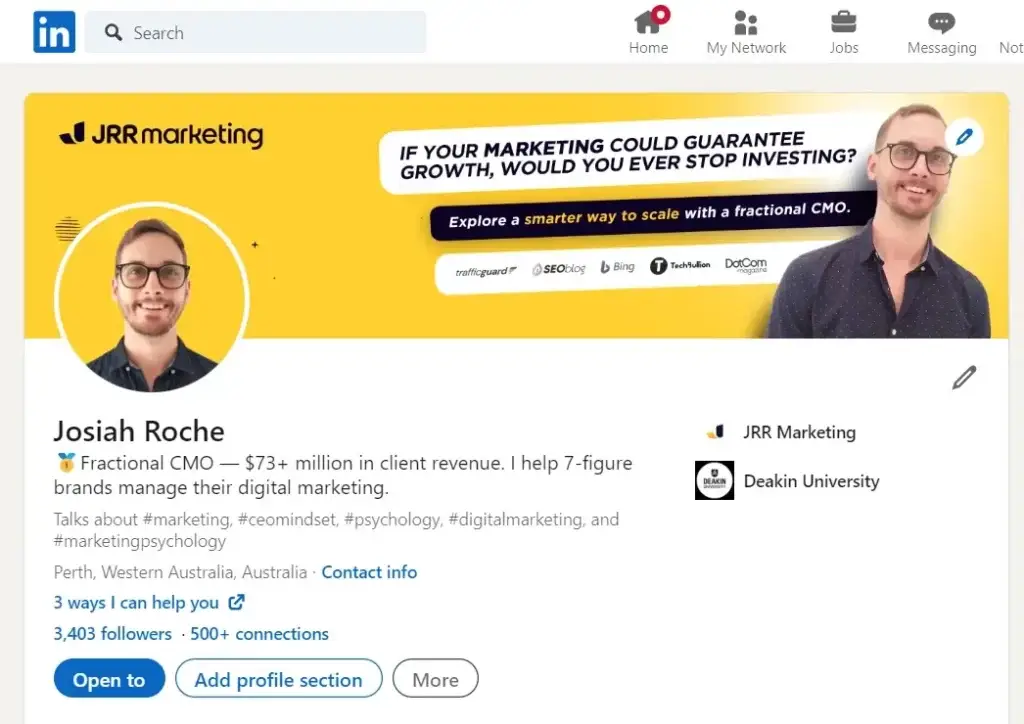
I’m not talking about sending a flurry of connection requests with a copy-pasted message.
It’s about engaging with content, dropping thoughtful comments, and sharing your insights.
It’s about creating conversations that matter, without the pitch.
Then there are Slack groups — the virtual water coolers of the internet.
There’s a lot of cool fractional communities out there now that you can join.
Here, you can drop in, offer value, get to know people in a less formal setting, and slowly become the person people think of when they need expert advice or services.
Partnerships, though?
That’s where the multiplier effect kicks in.
By joining forces with complementary businesses, you don’t just double your reach — you might just set off a chain reaction of opportunities.
It’s symbiosis at its finest, with each party bringing something unique to the table.
This isn’t about scratching backs or keeping score.
It’s about fostering relationships that are genuinely mutually beneficial.
Because when people see value in what you do, leads come in not as a trickle, but a flood.
Step 4: voice matters, share your opinions
Voice isn’t just about how you sound; it’s about having something to say that resonates — or deliberately jars.
The internet is cluttered with echo chambers, so a contrarian viewpoint isn’t just refreshing; it’s necessary.
It cuts through the noise.
Sharing a strong, well-articulated opinion does more than get you noticed; it establishes you as a thinker, a leader, and yes, sometimes a target.
That’s not a bad thing.
It’s a reality that if you’re pleasing everyone, you’re likely not pushing the envelope hard enough.
The fact is, being agreeable doesn’t start conversations.
People gravitate towards those who challenge the status quo, who can articulate their thoughts with conviction, even at the risk of creating friction. It’s that friction that often ignites interest and sparks dialogue.
Fear of making enemies can stifle your voice, but the goal here isn’t to create conflict; it’s to stand for something.
When you’re willing to put your stake in the ground, you become a beacon for others who share your values — and yes, for those who oppose them.
Being distinctive in your perspective invites trust.
It might seem counterintuitive, but when people know where you stand, they’re more likely to seek you out.
Your unique flavour isn’t for everyone, and that’s the point.
It’s for the ones who are looking for exactly what you have to offer, and they are the ones who make the most loyal clients and collaborators.
In essence, find your voice, share it boldly, and watch as your distinct melody attracts a crowd that’s tuned to your frequency.
Step 5: face reality, what works for others won’t always work for you
For my clients, Google Ads is a golden goose — seriously, we’re talking $73 million in sales golden.
But when it came to my own business, especially in the early stages, the irony was as thick as molasses:
Google Ads just didn’t click.
You’d think that someone who can turn ads into a client’s cash cow would have no trouble doing it for themselves, but the truth is, B2B marketing and agency marketing play by a different set of rules.
For one, the relationship component in B2B is huge.
Trust is the currency, and that’s not something easily bought with a few well-placed ads (especially with CPCs at $30+).
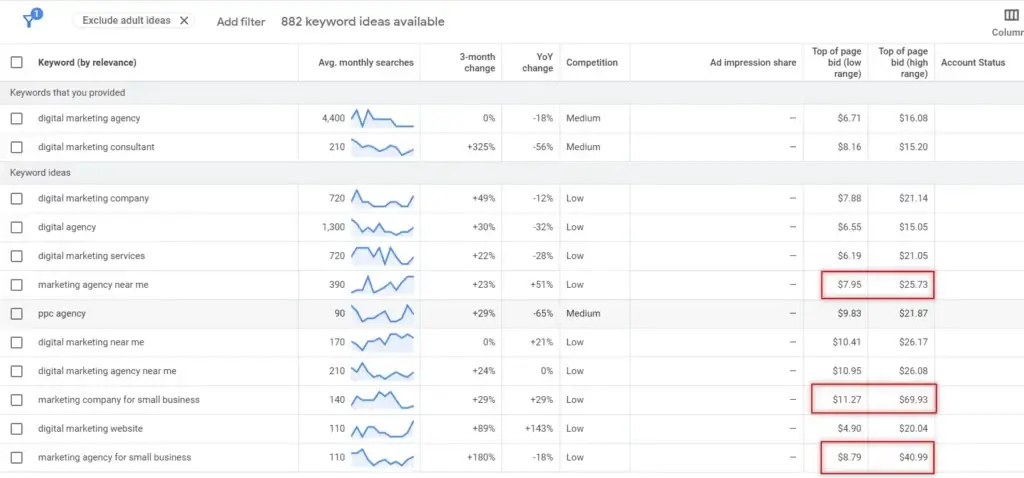
In the B2B world, decision-makers are inundated with pitches and proposals.
Standing out in that sea of sameness requires more than a clever headline or a catchy call-to-action.
It demands a personal touch, a demonstration of value that goes beyond what any ad could convey.
The lessons here?
First, not every marketing channel is a one-size-fits-all, and second, there’s a stark difference between marketing products and services.
While products can sometimes sell themselves with features and benefits, services — especially in the marketing domain — require that human connection, that proof of performance that comes from relationships built over time.
So, rather than pouring funds into the ad money pit, I leaned into building those relationships.
It’s a slower burn, but the credibility and trust that come from genuine connections are worth their weight in gold, or in my clients’ case, millions.
How to secure better fractional CMO positions
Change your mindset
The leap from standard contracts to value-based contracts was, for me, more of a mindset shift than a strategic one.
It’s not just about billing more hours; it’s about anchoring your work to the success it brings to your clients.
This approach paved the way to securing meatier contracts, where the stakes were higher, but so were the rewards.
By framing my services within a value-based context, I was able to demonstrate that my compensation was directly tied to the growth and success I brought to the table.
Clients don’t just pay for your time; they invest in the value you create.
When you can quantify your impact, whether it’s through growth metrics, ROI, or key performance indicators, you position yourself not just as a service provider but as a strategic partner.
In this framework, success becomes a shared venture.
It’s no longer about clocking in hours; it’s about being a part of the client’s journey to reach and surpass their goals.
When clients see that your skin is in the game, trust deepens, and so does their willingness to engage in more significant contracts.
Tweak your prices, always
Pricing isn’t just a number; it’s a signal.
It tells your prospective clients what you believe your service is worth and, by extension, how much they should value it.
I’ve learned that price tweaking is an art form – a delicate dance of numbers where perception plays a lead role.
Competitive pricing isn’t just about being affordable; it’s about being perceived as worth it.
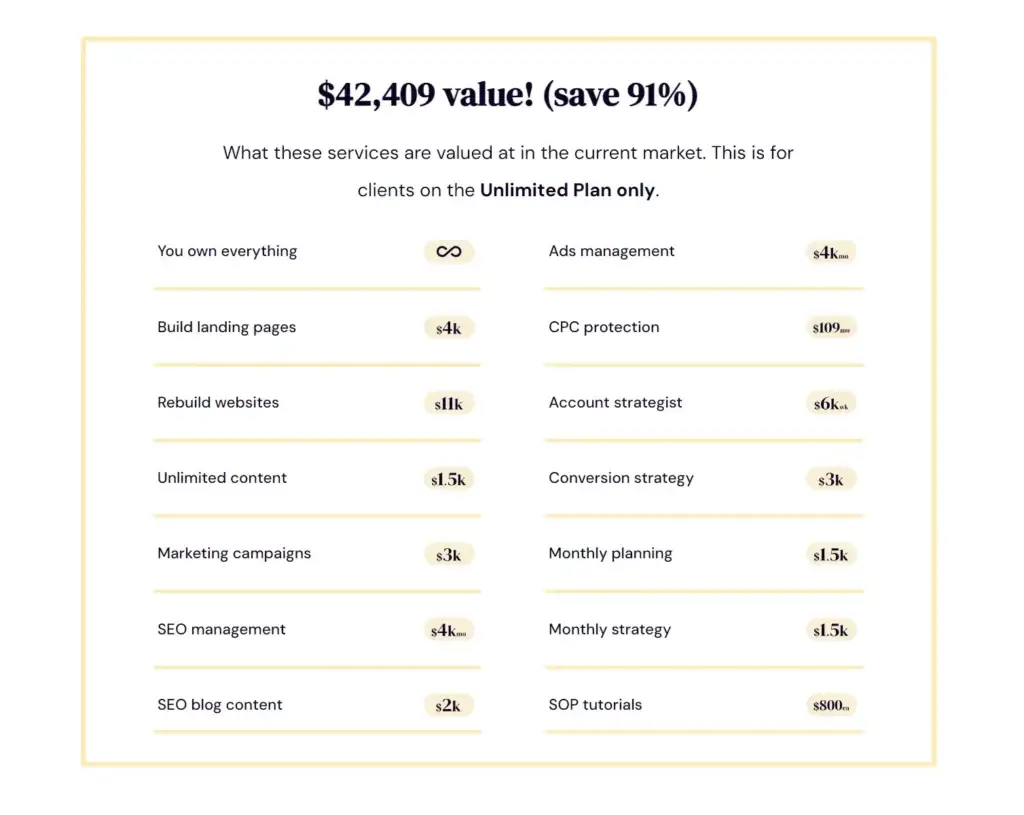
It’s about finding that sweet spot where the price reflects the value, and the client feels they’re making a smart investment.
There’s a psychological play at work: too low, and you risk devaluing your service; too high, and you might price yourself out of reach.
One strategy I’ve used is to present my pricing alongside tiers of service.
This not only anchors the perceived value but also gives clients the power to choose.
It’s this subtle nudge towards higher-valued tiers that often leads to a better bottom line.
Remember, the price is part of the story you’re telling about your service.
Make sure it’s a compelling one.
Don’t stand still
Resting on your laurels in digital marketing is like walking backward.
It’s constantly shifting, and yesterday’s cutting-edge strategy is today’s old news.
I’ve come across so many professionals who cling to what they know, like Google Ads specialists who swear by Single Keyword Ad Groups (SKAGs) or content writers who baulk at the idea of integrating AI tools like ChatGPT into their workflow.
This reluctance to adapt is a fast track to becoming obsolete.
To stay relevant, I immerse myself in continuous learning.
What’s new in PPC? How is AI shaping content strategy? By staying curious and adaptable, I can pivot with the industry’s tides, not against them.
The key is to move with the times — or better yet, ahead of them. That’s what separates the leaders from the followers in this game.
Make friends with your “competitors”
The market is vast, and the truth I’ve embraced is that your “competitors” are more like neighbours in an ever-expanding community.
By cultivating a spirit of camaraderie rather than rivalry, I’ve unlocked doors to collaborations that have enriched my business and professional growth.
In fact, I’ve partnered with one of Australia’s leading digital marketing consultants to collaborate on a podcast. You never know what doors will open for you.
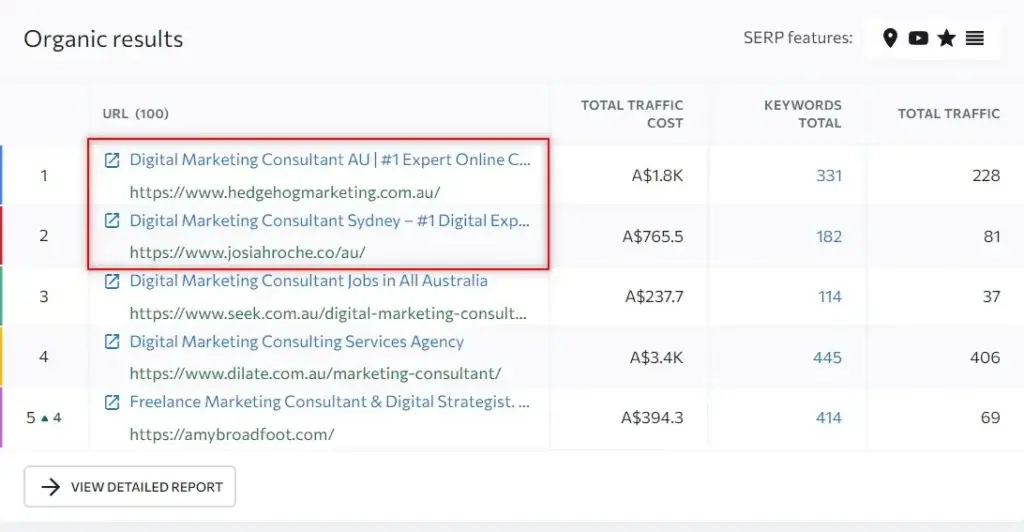
Referrals go both ways, and a project that doesn’t fit my schedule or skill set might be perfect for someone else.
Sharing the wealth doesn’t dilute your success; it multiplies it. It’s about growing the pie, not just carving out your slice.
Building relationships with peers has also been an invaluable learning channel.
Exchanging knowledge and experiences with those who walk a similar path has brought insights that no course or seminar could.
In essence, it’s about community over competition, and that’s a powerful paradigm shift.
Sign-off: parting thoughts on fractional CMO jobs
As the sun sets on this year’s journey, I find myself reflecting on the path that led me to becoming a fractional CMO.
It’s been a year of milestones and learning curves, of connecting dots and drawing new ones.
This narrative isn’t a victory lap or a sales pitch — it’s a breadcrumb trail for those who may follow.
The insights shared here aren’t just my lessons; they’re now part of a collective playbook that’s open for everyone to draw from.
Each challenge navigated and each strategy honed is a chapter that I hope can serve as both caution and catalyst for your own professional adventures.
Consider this not just a sign-off, but an open invitation to a conversation that doesn’t really end.
If anything I’ve shared resonates with you, or sparks a question, let’s keep the dialogue going.
In a field as dynamic as digital marketing, the best way to keep growing is to keep sharing—together.
Here’s to the paths we carve and the footsteps we leave for others.
Join the conversation, and let’s shape the future of fractional CMO roles, one shared experience at a time.

